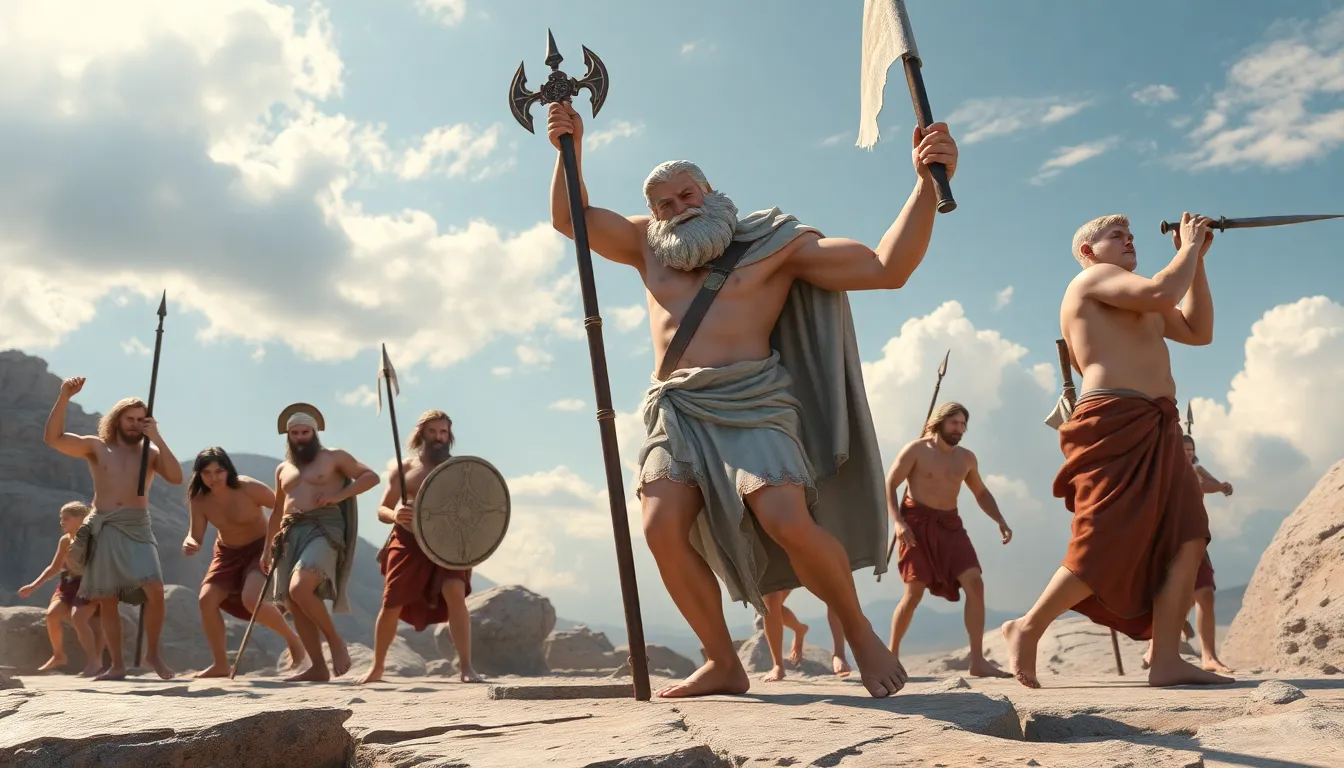Heracles: The Twelve Labors That Tested His Tenacity
I. Introduction
Heracles, known for his incredible strength and heroic feats, is one of the most celebrated figures in Greek mythology. Often depicted as the quintessential hero, he is synonymous with bravery and resilience. His adventures, particularly the Twelve Labors, serve as a testament to his tenacity and character. These labors, assigned to him as a penance, are not only physical challenges but also tests of his moral fiber and determination.
II. The Origins of Heracles and His Quest
Heracles was born to Zeus and Alcmene, a mortal woman, which positioned him at the crossroads of divinity and humanity. His birth was marked by an unusual prophecy that foretold he would bring great glory to his name, but this was met with jealousy from Hera, Zeus’s wife. Hera’s wrath manifested in a curse that drove Heracles into madness, leading him to commit tragic acts, including the slaying of his own children.
To atone for his actions, Heracles sought guidance from the Oracle of Delphi. The oracle instructed him to serve King Eurystheus of Tiryns, who would assign him a series of twelve labors. This marked the beginning of Heracles’ journey, a path filled with perilous tasks that would ultimately define his legacy.
III. The First Labor: The Nemean Lion
The first labor required Heracles to slay the Nemean Lion, a monstrous beast whose skin was impervious to weapons. The lion terrorized the region of Nemea, and many brave warriors had fallen to its might.
Heracles approached this labor with a blend of brute strength and cunning. After realizing that his weapons were ineffective, he decided to use his bare hands. He managed to strangle the lion, showcasing his physical prowess. Once defeated, he wore the lion’s skin as armor, symbolizing his triumph over fear and his newfound strength.
IV. The Second Labor: The Lernaean Hydra
Heracles’ second labor involved battling the Lernaean Hydra, a serpentine creature with multiple heads that could regenerate two for every one that was severed. This challenge was not only a test of strength but also required strategic thinking.
Heracles enlisted the help of his nephew, Iolaus. Together, they devised a plan: as Heracles struck off the Hydra’s heads, Iolaus would cauterize the wounds to prevent regeneration. This teamwork exemplified resilience and adaptability, highlighting the importance of collaboration in overcoming obstacles.
V. The Third Labor: The Ceryneian Hind
For the third labor, Heracles was tasked with capturing the Ceryneian Hind, a sacred deer with golden antlers and bronze hooves. The challenge lay not in slaying the creature, but in capturing it alive, which required great patience and perseverance.
Heracles pursued the hind for a whole year, demonstrating his respect for nature and commitment to the task. This labor underscored the significance of patience, as well as the idea that true strength lies not just in force, but also in restraint and understanding.
VI. The Fourth Labor: The Erymanthian Boar
The fourth labor involved capturing the Erymanthian Boar, a gigantic creature known for its ferocity. Heracles faced numerous challenges during this labor, including navigating treacherous terrain and enduring harsh weather conditions.
This task tested both his physical endurance and mental fortitude. Ultimately, Heracles successfully subdued the boar and brought it back alive to Eurystheus, symbolizing courage in the face of danger and the ability to confront fears head-on.
VII. The Remaining Labors: A Journey of Trials
The remaining eight labors are filled with equally daunting challenges:
- The Stymphalian Birds: Heracles used a rattle given to him by Athena to scare the birds into the air and then shot them down with arrows.
- The Cretan Bull: He captured the bull that fathered the Minotaur and brought it back alive.
- The Mares of Diomedes: Heracles tamed the man-eating horses of Diomedes by feeding them their master.
- The Belt of Hippolyta: He obtained the belt from the Queen of the Amazons, showcasing his diplomatic skills.
- The Cattle of Geryon: He traveled to the end of the world to retrieve the cattle guarded by the three-bodied Geryon.
- The Apples of the Hesperides: Heracles tricked Atlas into retrieving the golden apples while he held up the sky.
- The Capture of Cerberus: He descended into the Underworld to capture the three-headed dog, demonstrating his bravery.
Throughout these labors, recurring themes emerge: ingenuity, bravery, and moral growth. Each task contributed to the cumulative effect on Heracles’ character, transforming him from a troubled hero into a symbol of strength and virtue.
VIII. Conclusion
Heracles’ legacy is that of a hero who faced impossible odds and emerged victorious through sheer will and determination. The Twelve Labors serve not only as thrilling tales but also as profound lessons on tenacity and resilience. In modern life, we can draw inspiration from Heracles’ journey, recognizing that challenges can be overcome with persistence and courage.
The enduring nature of Heracles in literature and culture reminds us that the traits exemplified in his story—strength, bravery, and the relentless pursuit of goals—are timeless. Whether in ancient tales or contemporary narratives, Heracles remains a powerful symbol of the human spirit’s capacity to triumph over adversity.




